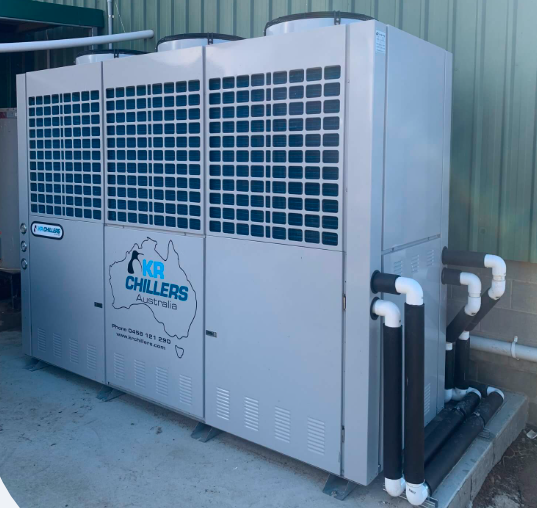In a world of industrial operations, where precision and efficiency are paramount, the choice of a chiller can prove to be a wise decision. Maintaining optimal temperature in your industrial facility is an important task and a chiller helps you achieve just that. But with countless options available, each with its unique set of features and capabilities, the task of choosing the perfect chiller can be nothing short of daunting. Make this chiller choosing task simple by joining us as we uncover the secrets to selecting the ideal chiller for your industrial facility’s specific needs.
11 Key Steps For Choosing Chillers
1. Define Your Cooling Needs
Before diving into the world of industrial water chillers, start by considering your facility’s cooling requirements. To know the requirements better, ask yourself:
- What is the temperature range needed for your processes?
- What is the required cooling capacity in BTUs or tons?
- Do you need constant cooling or variable cooling capacity?
- Are there any specific temperature tolerances or stability requirements?
Answering all these questions and knowing your needs will help you have a foundation to make the chiller selection process easier.
2. Consider The Type Of Chiller
There are several types of industrial chillers available, each designed to serve specific applications. The three most common types include:
-
Water Chillers:
These chillers use water as the cooling medium and are suitable for a wide range of applications. If you are looking for efficiency and versatility, these chillers should be your go-to choice.
-
Air-Cooled Chillers:
These chillers use ambient air to dissipate heat and are often preferred in facilities where water availability is limited or expensive to use.
If you are searching for chillers that can be ideal for low-temperature applications and areas with freezing concerns, the glycol chillers are your answer, as these chillers use a mixture of water and glycol as the coolant. However, ensure that you consider your cooling needs, available resources and environmental conditions in your facilities before you choose the right type.
3. Evaluate Energy Efficiency
Energy efficiency is a crucial consideration, as it not only impacts your operating costs but also aligns with sustainability goals. Look for chillers with high Energy Efficiency Ratios (EER) or Coefficient of Performance (COP) ratings. Additionally, consider features like variable speed drives (VSD) that can optimise energy consumption based on demand, reducing overall energy usage.
4. Space And Location
To make the chiller selection process easier and to narrow down the options, consider the physical space available in your facility. Know where you want to install the chiller and consider factors, such as space constraints, ventilation, and noise restrictions. If space is limited, compact or rooftop chillers might be more suitable.
5. Maintenance And Serviceability
Chillers, like any mechanical system, require regular maintenance to ensure optimal performance and longevity. Therefore, it is important to evaluate the ease of maintenance, availability of spare parts, and the reputation of the manufacturer for after-sales service and support.
6. Lifecycle Costs
Along with the initial purchase price, it is important to also consider the total cost of ownership over the chiller’s lifespan. This includes energy costs, maintenance expenses, and potential repair or replacement costs. A slightly higher upfront investment in a more energy-efficient chiller can result in substantial long-term savings.
7. Environmental Regulations
Be aware of any environmental regulations or restrictions that may apply to your facility. Some chillers use refrigerants that are subject to environmental restrictions due to their Global Warming Potential (GWP). Ensure that the chiller you choose complies with these regulations and uses environmentally friendly refrigerants. You can speak with the company to guide you through these regulations so that you can make an informed decision.
8. Scalability
Consider the future growth and changing needs of your facility. Can the chiller system be easily scaled up or modified to accommodate increased cooling demands? This is because scalability can be a valuable feature as your operations evolve.
9. Reliability And Durability
Industrial processes often require 24/7 operation. Therefore, the reliability and durability of the chiller are paramount. Look for chillers with robust components, reliable compressors, and a track record of consistent performance to ensure reliability and durability.
10. Consultation With Experts
The process of selecting a chiller can be complicated. Therefore, to make the task easier, you must consult with HVAC (Heating, Ventilation, and Air Conditioning) engineers or chiller manufacturers who can provide valuable insights and ensure that your choice aligns perfectly with your facility’s needs.
11. Lifecycle Planning
Planning for the entire lifecycle of your chiller is essential. This includes not only selecting the right chiller but also establishing a maintenance schedule, monitoring its performance, and knowing when it’s time for an upgrade or replacement. If you have a well-thought-out lifecycle plan, you can easily ensure continuous cooling efficiency.
Conclusion:
In conclusion, the journey to select the right chiller for your industrial facility is not merely a matter of purchasing a piece of equipment; it’s a strategic decision that can impact your operations, budget, and environmental footprint for years to come. At Kyabram Refrigeration, we understand the significance of this choice.
By thoroughly defining your cooling requirements, assessing energy efficiency, considering space and maintenance needs, and staying mindful of environmental regulations, you can confidently make an informed decision. As you navigate this path, make the right decision and pave the way for a future of efficient and effective cooling solutions.

